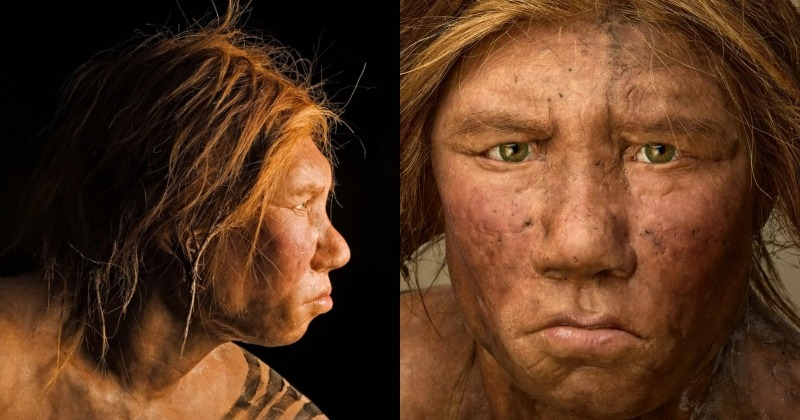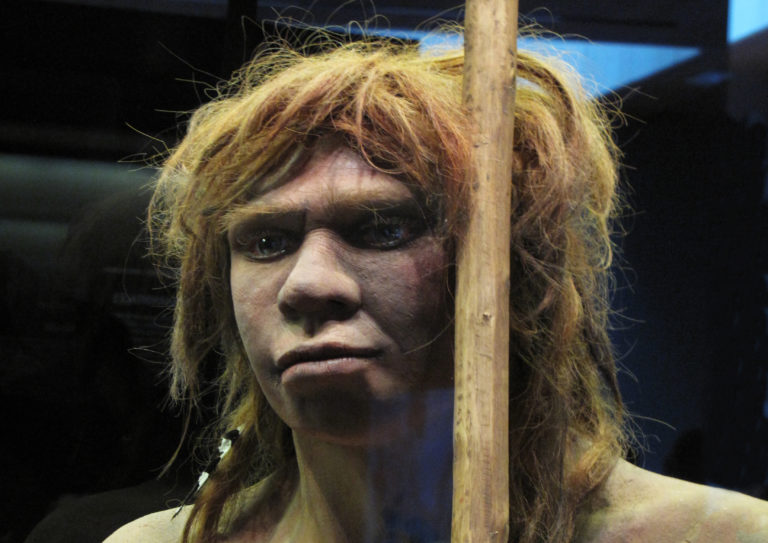In 2018, a groundbreaking discovery shook the world of human evolution. Researchers revealed the case of Denisova 11, a 13-year-old girl who lived over 50,000 years ago. What made her story so extraordinary? She is the only known individual in history to have had parents from two different hominin species—her mother was a Neanderthal, and her father a Denisovan. This astonishing find has not only rewritten the history of our ancient relatives but also opened new doors to understanding the interactions between these species.

Neanderthals and Denisovans: Who Were They?
Neanderthals: The Skilled Survivors
Neanderthals, scientifically referred to as Homo neanderthalensis, were a robust and highly adaptive species that lived across Europe and Western Asia for thousands of years. Known for their remarkable survival skills, Neanderthals were adept hunters and toolmakers, thriving in some of the most challenging environments, including the Ice Age. Despite their resilience, they disappeared from the fossil record around 30,000 years ago, leaving behind a wealth of archaeological evidence that continues to intrigue scientists.
Denisovans: The Mysterious Cousins
On the other hand, Denisovans (Homo sapiens denisova) remain a mystery to this day. Unlike Neanderthals, very little is known about their physical characteristics or culture because their existence has primarily been pieced together from tiny bone fragments and DNA analysis. Discovered in Siberia’s Denisova Cave, Denisovans lived alongside modern humans and Neanderthals. Though we don’t know much about their appearance or lifestyle, genetic studies have shown that Denisovans interbred with modern humans, particularly in populations from East Asia and Oceania.
Denisova 11: The First Known Hybrid
Denisova 11, or “Denny” as she has been nicknamed, was a revolutionary find that provided direct evidence of interbreeding between Neanderthals and Denisovans. Discovered through genetic analysis of a single bone fragment, Denny’s DNA revealed a shocking truth—her mother was a Neanderthal, and her father was a Denisovan.
A First-Generation Hybrid
Prior to Denisova 11’s discovery, researchers had long suspected that Neanderthals and Denisovans occasionally interbred. However, the evidence had been scarce and mostly theoretical. Denisova 11’s existence provided undeniable proof of direct, first-generation interbreeding between these two ancient species. The revelation that her parents came from distinct species marked an unprecedented moment in our understanding of human evolution.
What Denisova 11 Tells Us About Ancient Interactions
The discovery of Denisova 11 offers profound insights into the social dynamics between Neanderthals and Denisovans. While these two species were genetically distinct, their ability to produce viable offspring indicates that they likely lived in close proximity and interacted regularly.
Frequent Interbreeding Across Generations
One of the most remarkable aspects of Denisova 11’s discovery is that it wasn’t a one-time occurrence. Genetic evidence suggests that interbreeding between Neanderthals and Denisovans occurred multiple times over thousands of years. This challenges previous beliefs that ancient hominin species remained largely isolated from one another.
The fact that Denisova 11 was a first-generation hybrid points to the likelihood that such interactions were more common than initially thought. Her existence forces us to reconsider the rigid boundaries previously drawn between different hominin groups.
Tracing Species Migration Through DNA
Denisova 11’s DNA has not only provided clues about interbreeding but also shed light on the migration patterns of ancient hominins. Surprisingly, her genetic makeup was more closely related to Neanderthals from Western Europe than to Neanderthals who lived near Denisova Cave in Siberia. This suggests that Neanderthals, once thought to have limited mobility, may have traveled much further than previously believed.
The Movement of Neanderthal Populations
The discovery that Neanderthal populations likely moved across vast distances raises important questions. What drove these migrations? Were they influenced by environmental changes, competition with other species, or the search for new resources? Understanding these migration patterns may offer valuable insights into the challenges and adaptations that shaped the lives of our ancient ancestors.
Denisova 11’s DNA holds clues that may help researchers unravel the complexities of ancient migration, opening new avenues of exploration into the history of human evolution.
ZooMs: The Technology Behind the Discovery
The identification of Denisova 11 would not have been possible without cutting-edge technology, specifically a tool called Zooarchaeology by mass spectrometry (ZooMs). Developed by Mike Buckley, this revolutionary technique allows researchers to analyze bone fragments and distinguish between different species, even when DNA is difficult to extract.
How ZooMs Works
ZooMs uses a non-invasive process to identify the origins of ancient bone fragments. By analyzing proteins within the bone, the technique can rapidly determine whether the fragment belongs to a human or an animal and even differentiate between various hominin species. In the case of Denisova 11, ZooMs was crucial in identifying her as a first-generation hybrid.
This technology has the potential to unlock countless other mysteries from our evolutionary past, allowing researchers to sift through vast amounts of bone material and uncover new insights into how different hominin species interacted and evolved.
The Impact of Denisova 11 on Our Understanding of Human Evolution
The discovery of Denisova 11 has fundamentally changed how we view the relationships between Neanderthals, Denisovans, and modern humans. Her existence demonstrates that the lines between species were far blurrier than previously believed. Rather than existing in isolated groups, ancient hominins interacted, interbred, and exchanged genetic material across generations.

A Complex Evolutionary Web
Denisova 11 reminds us that human evolution is not a straightforward story. It is a complex web of interactions, migrations, and genetic exchanges between different species. Her discovery has opened up new questions about the social, cultural, and biological factors that influenced these ancient hominins. Were there other hybrids like Denisova 11? How did their mixed ancestry affect their survival and adaptation to changing environments?
As researchers continue to analyze Denisova 11’s DNA and explore the regions where Neanderthals and Denisovans coexisted, we may gain further insights into the rich and intricate history of human evolution.
Conclusion: The Legacy of Denisova 11
The story of Denisova 11 offers a rare glimpse into a pivotal moment in human evolution. As the first known hybrid between Neanderthals and Denisovans, she represents a crucial link in understanding the complex interactions that shaped the genetic makeup of modern humans.
Her discovery has challenged long-held assumptions about the separateness of ancient species, highlighting the fluidity and interconnectedness of our evolutionary past. With new technologies like ZooMs leading the way, Denisova 11 may be just the beginning of many more discoveries that will continue to reshape our understanding of where we come from.
As we piece together the puzzle of our origins, Denisova 11 stands as a testament to the unexpected twists and turns in the story of human evolution.


